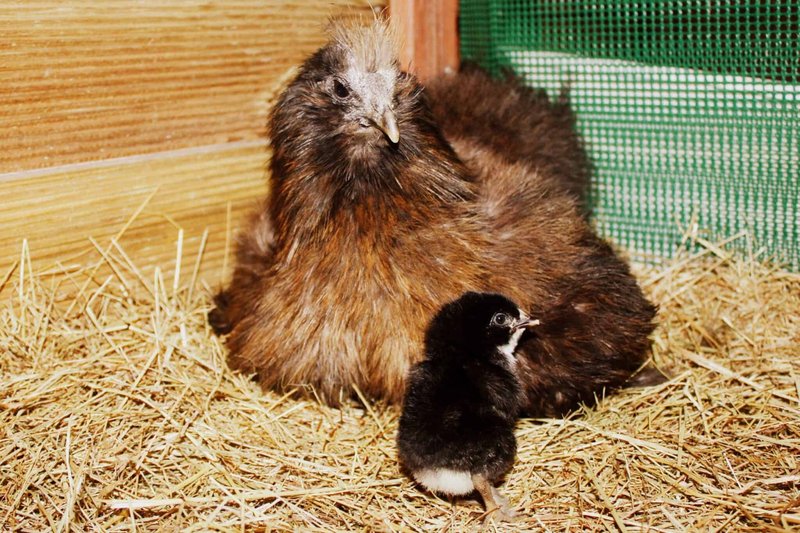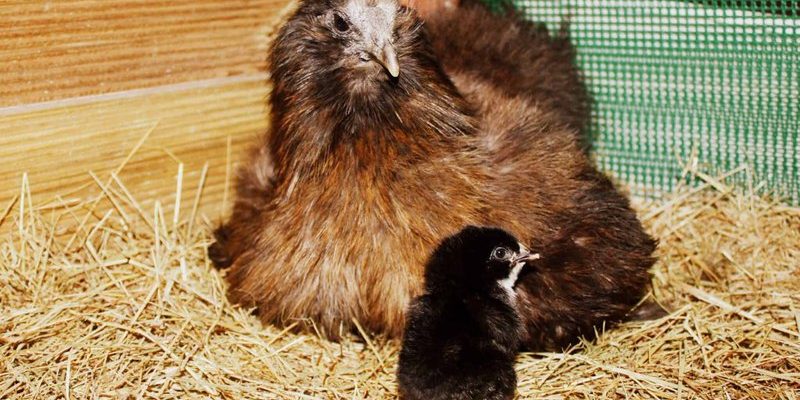
Silkies are known for being fantastic mothers, which makes them a favorite among chicken-keepers. But what exactly are their nesting habits? How do they care for their eggs and chicks? It’s not just about laying eggs; it’s about creating a safe, cozy environment for their little ones. In this article, we’ll explore the lifecycle of Silkies, their nesting behaviors, and what makes them such wonderful parents.
Understanding Silkie Chickens
Before we get into nesting habits, it’s essential to understand what sets Silkie chickens apart from other breeds. Silkie chickens are renowned for their soft, fluffy feathers that resemble silk—hence the name. They come in various colors, including black, white, and blue. Their unique appearance isn’t just for show; those fluffy feathers help them stay warm and protect them from harsh weather conditions.
Silkies are friendly and tend to have a calm demeanor. This makes them excellent pets and companions. They’re often described as being “dog-like” in their behavior. They love to interact with their human caretakers and are less skittish than many other chicken breeds. This calm and friendly nature plays a crucial role in their nesting habits as it builds a loving environment for their eggs.
Nesting Preferences of Silkie Chickens
When it comes time to lay eggs, Silkie chickens prefer cozy and secure spaces. They often choose to lay eggs in nesting boxes that are dark and private, which helps them feel safe and secure. You might be wondering, “What does a good nesting box look like?” Well, a typical nesting box should be about 12 inches square, lined with straw or hay for comfort.
Silkies are known to be quite picky about their nesting spots. If they don’t find a suitable place, they may hold off on laying until they do. Honestly, it’s all about creating a secure little nook where they feel at ease. You’ll often find them fluffing up their bedding, rearranging it to create the perfect nest before laying their eggs.
On average, a Silkie will lay about three to five eggs each week, but this can vary depending on their environment and health. Keep an eye on your Silkie’s behavior; if she’s acting a little more protective or withdrawn, she might be getting ready to lay.
Egg Laying and Incubation
Once a Silkie lays her eggs, it’s time for the exciting part—incubation! If she’s broody, she’ll sit on her eggs, keeping them warm and turning them regularly. You might be curious about how long they incubate for. Well, Silkie eggs typically hatch after about 21 days. During this time, the hen will rarely leave her nest, only getting up to eat, drink, and relieve herself.
It’s essential to let her have this time uninterrupted. You see, Silkies are incredibly devoted mothers. They’ll tuck their eggs under their bodies, keeping them at just the right temperature. If you ever get a chance to witness this, it’s a heartwarming sight. The way they gently talk to their eggs and shift them around is nothing short of amazing.
If you’re lucky enough to have a Silkie successfully hatch her eggs, you’ll notice the strong bond they form with their chicks. After hatching, a Silkie mama will lead her little ones around, teaching them how to peck for food and stay safe.
Silkie Chicks: The Next Generation
Speaking of chicks, let’s talk about what happens after the eggs hatch. Silkie chicks are tiny, fluffy, and downright adorable! They typically weigh around 30-50 grams at birth and are covered in soft down feathers. These little ones are incredibly vulnerable, which is why having a protective mother is vital.
In the first few days, Silkie chicks rely heavily on their mom for warmth and guidance. She’ll keep them close, showing them where to find food and water. Here’s the thing: the first few weeks of a chick’s life are crucial for their development. During this time, they’ll learn not only how to eat and drink but also social skills from their mother and siblings.
Interestingly, Silkie chicks are known for being calm and friendly, just like their parents. With proper care, they’ll grow into sociable adults, making them perfect companions in any backyard flock.
Seasonal Breeding and Nesting Behavior
Silkie chickens can breed year-round, but many choose to breed in spring or summer when temperatures are milder. This seasonality affects not just their laying habits but also their overall health. Warmer weather means more comfortable incubation for the mom and a better survival rate for the chicks.
During these months, you might notice your Silkie becoming more broody. Broodiness varies between hens, with some laying on and off more frequently. Fertilized eggs can be hatched under the hen or in an incubator, but it’s often best for a dedicated hen to care for them.
If you’re breeding Silkies, it helps to provide a proper nesting environment, along with good nutrition. A balanced diet containing enough protein and calcium is essential to keep your hens healthy as they lay and incubate their eggs.
Challenges in Nesting and Raising Chicks
Like any living creature, Silkie chickens face challenges during their nesting and rearing periods. One common challenge is finding a safe nesting space free from predators. If they feel threatened, they might abandon their eggs or, worse, their chicks. To make their environment safer, consider placing their nesting boxes in a quiet, secure area.
Another issue that may arise is broodiness. While broodiness is a natural behavior, sometimes it can go overboard. You might have a hen that wants to stay in the nest even after her eggs hatch. This prolonged brooding can lead to health issues. It’s a good idea to monitor your hen and give her a break if necessary.
Lastly, sometimes chicks may struggle to thrive. This can happen due to inadequate care or environmental conditions. Be attentive to their needs, ensuring they have warmth, food, and hydration during the crucial first days and weeks.
Caring for Silkies Throughout Their Lifecycle
Caring for Silkie chickens throughout their lifecycle is both rewarding and essential. From providing a comfortable nesting space to ensuring they have proper nutrition, your role as a caretaker is vital. Regularly check for any signs of illness or distress, and give them a balanced diet rich in grains, vegetables, and proteins.
Don’t forget about their social needs! Silkies thrive in flocks and enjoy interacting with others. This means having a mix of hens and roosters or at least a few Silkie companions can significantly help their happiness and overall well-being.
You might want to consider introducing your Silkie chickens to a safe outdoor space. They love to scratch around in the dirt and soak up the sun. Just make sure their area is predator-proof to avoid any nasty surprises.
In conclusion, understanding the nesting habits and lifecycle of Silkie chickens not only deepens your appreciation for these delightful birds but also helps ensure their health and happiness. Whether you’re raising them for fun, companionship, or for their adorable chicks, cultivating a nurturing environment is key to their success. Their journey from egg to fluffy chick is a remarkable experience filled with love, care, and a bit of delightful chaos. Happy chicken keeping!

